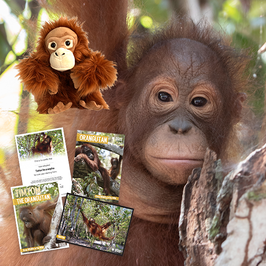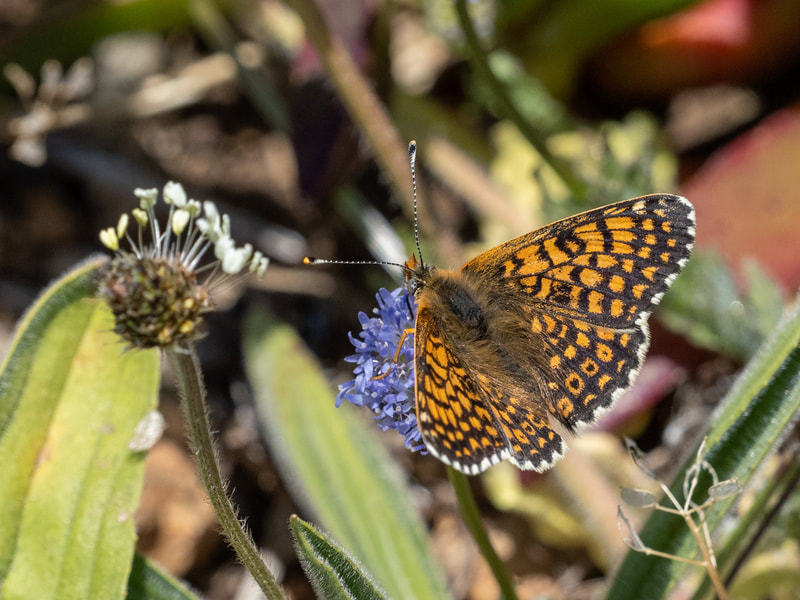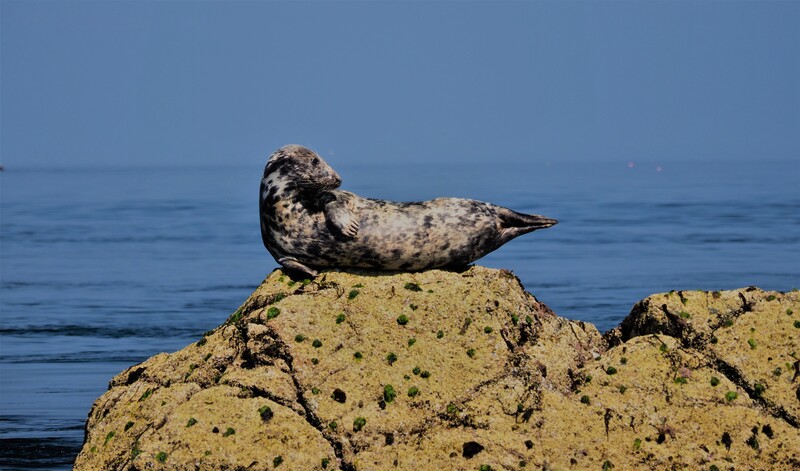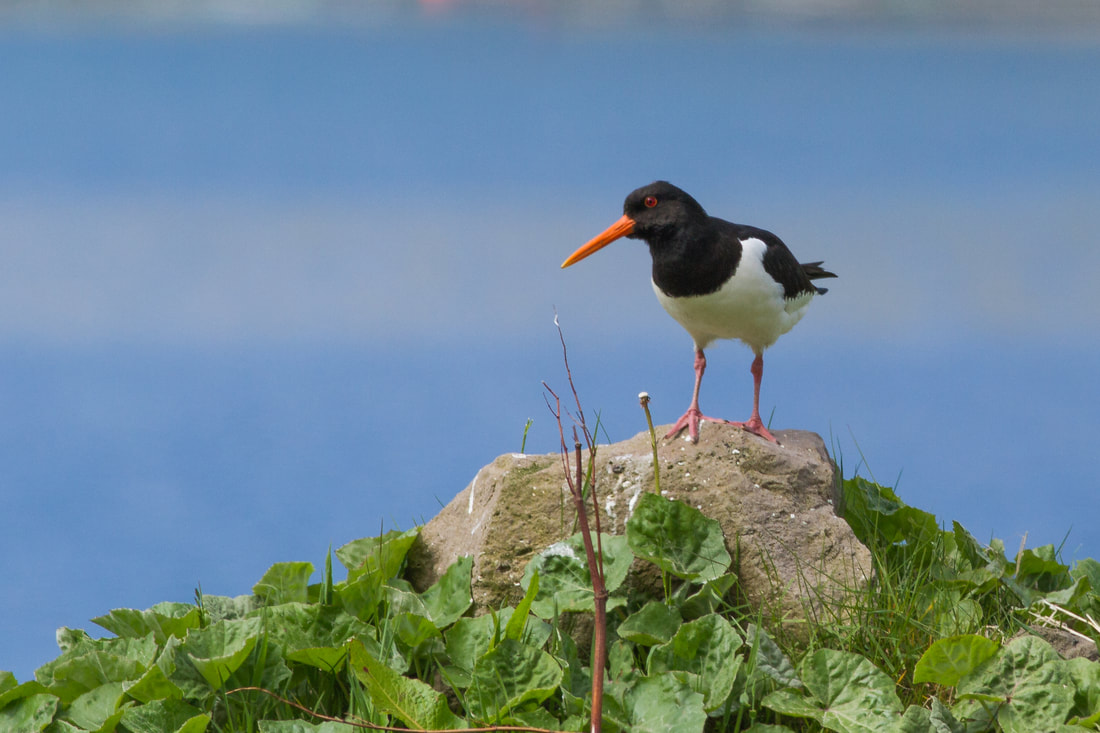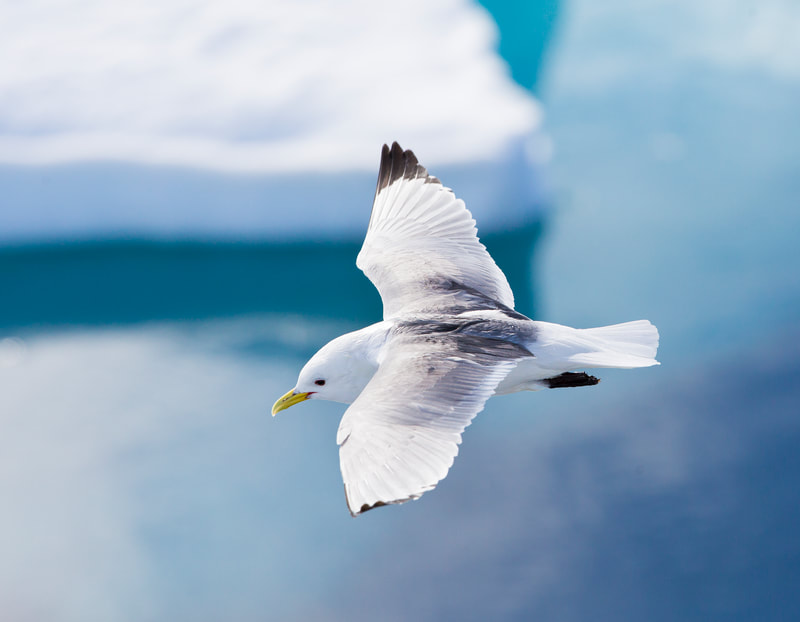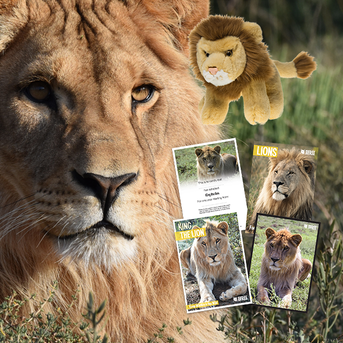 A Born Free adoption is the gift that gives twice. From King the lion to the Brown Bear Orphans, there are 19 fabulous adoptions to choose from. All are real animals, either living in the wild and protected by Born Free's conservation projects or receiving expert lifetime care in the charity's sanctuaries. Besides adopting an animal, you can buy your Christmas gifts here too. A varying percentage of profits from sales, depending on product, go directly to Born Free, the international wildlife charity founded in 1984 by actors Bill Travers MBE and Virginia McKenna OBE. Adoption packs last one year. The recipient receives a gift pack, soft toy and a bi annual copy of Born Free’s Adopt magazine.
0 Comments
Alderney wildlife sightings The Alderney Wildlife Trust has reported sightings of bottlenose dolphins, grey seals and 2021's first butterfly, the Red Admiral while the island is also home to blonde hedgehogs, the lesser-spotted palmate newt and birds including the Dartford warbler and grey wagtail. The Bird Observatory on Longis bay provides accommodation for bird watchers and researchers, so allowing them to get even closer to the island’s winged inhabitants. Staff from the Alderney Wildlife Trust have teamed up with Visit Alderney to provide a series of virtual walks starting with Fort Albert and Bibette Head Trail, which can be watched on the Trust's YouTube channel here. 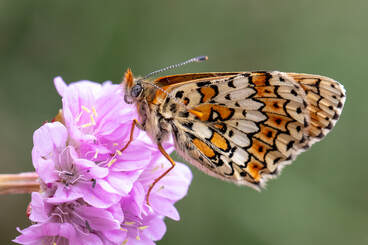 Wildflowers, insects and marine life in Guernsey Swathes of yellow gorse and bright pink common storksbill are emerging along the south coast with endemic ferns and orchid fields prolific at Les Vicheries on the west coast. Bee orchids were found for the first time last year in St Germain. For amateur entomologists, the rare black backed meadow ant, once found across the British Isles, now live only on the cliffs in Guernsey as well as some neighbouring Islands. Nests are marked with red flags. The rare glanville fritillary butterfly is a frequent sight in Guernsey despite falling numbers in the UK, where they’re now spotted in just a few coastal locations. In bays around the island and off neighbouring Herm, underwater meadows of seagrass are visible at low tide. These act as a nursery for schools of fish and absorb carbon from the atmosphere. Large pods of dolphins travel along the south coast cliffs with Havelet bay recorded as the most popular sighting spot. You might also see the shy brown Guernsey vole, considerably larger than its European counterpart, as it is occasionally visible in the fields. Read about one of my visits to Guernsey and Sark HERE During lockdown, La Société Guernesiaise, an organisation whose goal is to preserve Guernsey’s biodiversity, has launched the initiative ‘A Look at Lockdown’ to encourage locals to take photos of wildlife. There has been an increase due to fewer cars being on the road. Puffin watching in Herm & Sark From mid-March to July, puffins migrate to the islands to breed, especially on Herm and Sark. In normal times, visitors can take a boat trip around the islands, while the more adventurous may prefer a puffin-kayaking trip with Outdoor Guernsey. Sark’s Gouliot Headland, declared a ‘Wetland of International Importance’ under the Ramsar Convention, is carpeted with anemones, sponges and soft corals, seen during spring low tide. Herm is a Ramsar site designated for its intertidal area and breeding bird populations. Bird nesting in Lihou The tidal island of Lihou also a Ramsar site is home to over 150 species of birds including the striking black-backed gull. Lihou’s rocky outcrops and shingle banks offer the perfect nesting environment. The absence of visitors last year meant that breeding pairs of internationally important species including European shags and oystercatchers were seen nesting around the island. Over the past few years the species have been in decline due to human interference. However, Lihou's unique location and lockdown measures enabled the birds to breed successfully. more at www.visitguernsey.com images (c) Andy Marquis - Guernsey Wildlife and Nature Photography /The Bailiwick DolFin Project/ Rod Ferbrache Specialist small-ship expedition cruise company Heritage Expeditions offers ‘Siberia’s Forgotten Coast’ tour which explores Kamchatka’s remote coastline and supports the critically endangered spoon-billed sandpiper. The company is delighted with the latest news that 22 healthy chicks have been released into the wild. Heritage Expeditions Commercial Director & Expedition Leader Aaron Russ says, “Having supported conservation efforts for the spoon-billed sandpiper since 2011, we are thrilled to learn of this latest success, part of international efforts to help save this incredible wader from extinction.” Of the 30 eggs collected from Arctic breeding grounds, 22 chicks were successfully reared in captivity before being released recently into their natural habitat of Meinypil'gyno, Russia. The head of BirdsRussia, a Russian NGO committed to the Conservation and Study of Wild Birds, Dr Evgeny Syroechkovskiy, explains, “The birds are healthy. All 'wards' were provided with tags before release so they can be tracked along the migration routes, which began in early August. We followed them every day documenting who stayed, who has flown away and who is doing what. " The international ‘head-starting’ project which aims to preserve and increase the bird population was launched nine years ago with the participation of the Wildfowl and Wetland Trust, British Royal Society for the Conservation of Birds and the International Spoon-Billed Sandpiper Task Force of the EAAFP and is supported by the Chukotka Government.
These iconic wading birds only breed in Chukotka and northern Kamchatka in the Far East of Russia, a remote, largely inaccessible region, making it difficult for researchers attempting to identify potential new breeding sites for the birds. However Heritage Expeditions whose purpose-built expedition ships allow them to reach otherwise isolated and inaccessible locations, have been able to support SBS conservation efforts by providing transport for the Spoon-billed Sandpiper Task Force and BirdsRussia. This has enabled researchers to visit parts of the 4,500-kilometre coastline in search of breeding pairs and discover new breeding sites. The company has also delivered a new boat and quad bike to assist research and even transported spoon-billed sandpiper eggs and chicks bound for a conservation breeding facility. Spoon-billed Sandpiper Task Force Coordinator Dr Christoph Zöckler describes the partnership with Heritage Expeditions as a ground breaking example for future cooperation in modern conservation. "Nature conservation urgently needs more collaboration with tourists to enhance their efforts to save the ailing biodiversity on this planet. Our relationship with Heritage Expeditions is a win-win situation for both and an outstanding example of an effective relationship between a conservation group and the business sector." Passengers who join the 14-day Siberia’s Forgotten Coast expedition will not only be able to view spoon-billed sandpipers in Meinypil’gyno the main breeding area in Chukotka, they will also have the chance to play an active role in locating breeding areas in locations never before surveyed. Every day of the expedition reveals the richness and diversity of wildlife species. Highlights include the Commander Islands where sea otters, a variety of whale species and a plethora of sea birds from red-face cormorants to whiskered auklets may be seen, as well as the Govena Peninsula and the largely unknown Chukotka Coast, both of which are home to brown bears. Heritage Expeditions’ next Siberia’s Forgotten Coast voyage departs from Petropavlovsk-Kamchatskiy on 22nd June 2021. Prices from US$7380 pp based on a triple share cabin and includes all meals during the voyage and expedition shore excursions. Further information on spoon-billed sandpipers, visit: https://trips.heritage-expeditions.com/spoon-billed-sandpiper-conservation/ images © ACharles, ETan, CCollins, GBreton Flora, fauna and all kinds of wildlife are enjoying benefits of a huge decrease in global carbon emissions and footfall reduction in some of our treasured outdoor spaces. These include the Celtic Routes counties Pembrokeshire, Ceredigion and Carmarthenshire in Wales and Wicklow, Waterford and Wexford in Ireland. Dolphin Spotting off New Quay, Ceredigion Cardigan Bay is famed for bottlenose dolphins and has a population of around 250 attracted by abundant feeding grounds, undisturbed habitat and clean waters. It’s possible to see dolphins year round, but prospects are best in summer when there’s plenty of mackerel in the sea. Improve the odds of seeing them and colonies of seabirds by taking a charter boat trip into Cardigan Bay. Bottlenose dolphins are highly intelligent and extremely sociable and often leap alongside boats riding the bow wave making them fun to observe up close. Pembrokeshire Islands The seven islands, Caldey, Grassholm, Middleholm, Ramsey, Skokholm, Skomer and St Margaret’s are uninhabited now except Caldey, although many are nature reserves with wardens. Skomer, Ramsey and Caldey are the most accessible with daily boat trips from the mainland between Easter and October while the others can be seen up close from a boat. Skomer, Skokholm and Grassholm are grouped together as a Site of Special Scientific Interest because of their puffins, Manx shearwaters, and gannets. Day visits are not currently permitted, but boat trips touring around the islands are operational. Seal Spotting at Cemaes Head, Pembrokeshire Autumn is the best time to spot one of Pembrokeshire’s best-loved mammals, the Atlantic grey seal. Not only is this when the females come ashore to give birth, but there’s a good chance you’ll get to see their adorable white pups too. Pups generally arrive between late August and November, starting life with silky-soft white fur. When this is replaced with a thicker, darker, waterproof adult coat the pup is ready to learn to catch fish for itself. Cemaes Head, North Pembrokeshire, is Wales highest sea-cliff and an important breeding site where many pups are born. The inaccessible pebbly beach below is the spot for the largest Atlantic grey ‘haul-out’ in Pembrokeshire, when up to 200 seals and pups can be ashore at any one time. Ystradffin, Carmarthenshire Persecuted to near extinction in the UK, the Red Kite could at one time only be found in Central Wales. Now there have been Red Kite reintroduction programmes across the UK with one recent sites being in Carmarthenshire. Narrow valleys and high mountains mean the Ystradffin area is one of the best habitats for this magnificent bird of prey. Wexford Wildfowl Reserve, Wexford Wexford Wildfowl Reserve was originally founded as a winter sanctuary for Greenland white-fronted geese. Located on flat farmland reclaimed from the sea in the 1840s, 40% of the world’s population of Greenland white-fronted geese find food and shelter here along with thousands of wildfowl, waders and other birds. Over 250 species of birds have been recorded. *The reserve is not currently open, but check here for updates and information on opening. Whales Breaching at Hook Head, Wexford November marks the beginning of whale watching season off the Hook Peninsula. In 2010 there were reports of Fin whales and a Humpback spotted off the coast at Hook Head and they have made a welcome return every year since. The red balcony at the top of Hook Lighthouse makes an ideal viewing point with binoculars or whale watching boat trips are available. Humpback whales are amongst the largest animals on earth, growing up to 16 metres in length and weighing up to 40 tons. Experts have located a breeding ground for the ‘Irish’ Humpback whales in the Cape Verde islands meaning they travel nearly 5,000km every year through some of the world’s busiest shipping lanes to get to Wexford's rich feeding grounds. Hook Head is also a Special Protected Area for birds with an abundance of geodiversity, vegetated sea cliffs and fossils. Ardmore, Waterford
Ardmore is great for bird watchers who may spot nesting fulmars and kittiwakes at Ram Head; divers and waders, whimbrel, cliff-nesting house martins; migrant warblers and goldcrests. Rarer species include black-throated diver, eider, red-necked phalarope, black redstart, firecrest and crossbill. The Celtic Routes are comprised of 78 visitor experiences across the six counties, giving tourists the opportunity to explore these beautiful and spiritual parts of west Wales and eastern Ireland characterised by unspoilt beaches, rolling countryside and dramatic mountain ranges. Images thanks to © Daisy Gilardini Wildlife & Andrew-Halsall, Boomer Jerritt Garden birds benefit most from extra food during winter, but will visit garden feeders year round once they know they’re there. Feeders can be made from materials you probably have at home already - simply hang them up in a tree, from a post, bracket or even a washing line. The ideal spot is somewhere that doesn’t get disturbed too much, is sheltered and offers plenty of visibility so birds can see any danger coming (like neighbourhood cats). Put small amounts of food out at first, so you don’t get waste that might attract unwanted visitors. Some birds, including robins, prefer feeding from a flat surface, so you could put out a tray, table or dish of seeds to suit them. 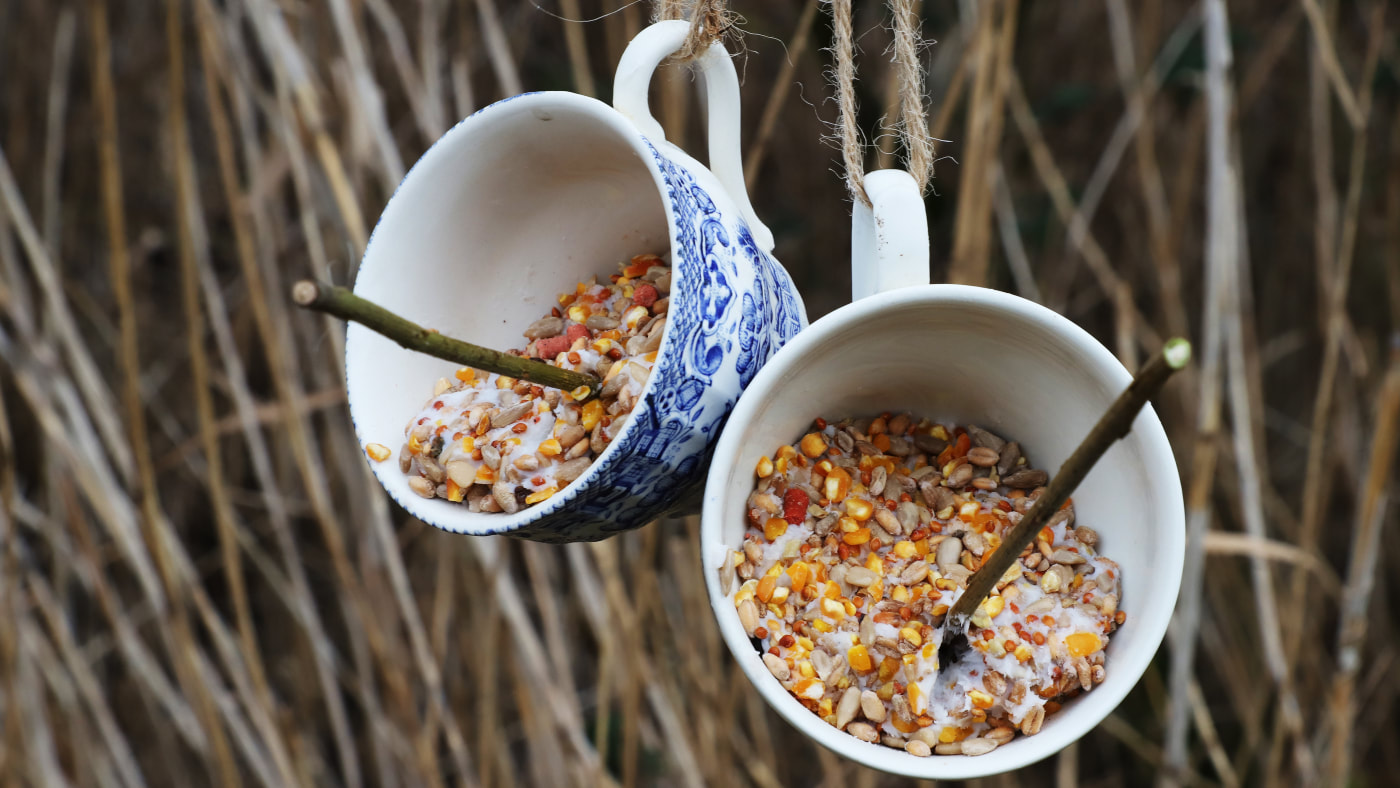 What you will need
Method
See the National Trust website for lots more ideas and inspiration all images copyright National Trust Making a pine cone feeder. Click on images to enlarge.
YouTube Videos on how to make easy feeders from a mug and a toilet roll holder HERE |
AuthorI'm Gilly, award winning journalist, travel writer, 13 x author. Credits include: Telegraph, Mail, CNN, Express, BBC mags, Country & Town House, The Scotsman, World of Cruising & countless others Categories
All
|
